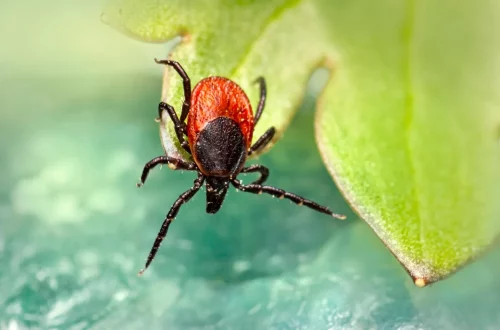
Can Guinea Pigs Eat Lettuce? What You Need to Know
Guinea pigs are beloved pets known for their friendly nature and unique personalities. As small rodents native to the Andes Mountains in South America, they have specific dietary needs that owners must consider to ensure their health and happiness. While many pet owners may be tempted to share their food with these adorable creatures, it is crucial to understand what is safe and nutritious for them. One common question that arises among guinea pig enthusiasts is whether lettuce is a suitable food option for these furry companions.
Lettuce is often seen as a staple in human salads and diets, but its nutritional value for guinea pigs can vary significantly. Different types of lettuce can have differing effects on a guinea pig’s digestive system and overall health. Moreover, understanding the right portions and frequency of serving fresh greens is essential to avoid any potential health issues. As responsible pet owners, it is our duty to provide a balanced diet that meets the specific needs of our guinea pigs while ensuring they enjoy a variety of flavors and textures.
In this article, we will explore the implications of feeding lettuce to guinea pigs and provide insights into their dietary requirements, focusing on the best practices for keeping your pet healthy and happy.
The Nutritional Needs of Guinea Pigs
Guinea pigs have distinct dietary requirements that differ from those of many other pets. Being herbivores, their diet should primarily consist of hay, fresh vegetables, and a small amount of fruit. Hay, particularly timothy hay, is essential as it provides the necessary fiber that supports their digestive health. Fiber is crucial for guinea pigs because it helps prevent gastrointestinal issues, which are common among these small animals.
In addition to hay, fresh vegetables are a vital component of their diet. Vegetables provide essential vitamins and minerals, which contribute to their overall well-being. However, not all vegetables are created equal when it comes to guinea pigs. Some, like carrots and bell peppers, are highly nutritious, while others may cause digestive upset if fed in excess.
Vitamin C is particularly important for guinea pigs, as they cannot synthesize it on their own. A deficiency in this vitamin can lead to serious health problems, including scurvy. Therefore, incorporating a variety of vitamin C-rich vegetables into their diet is essential. While fresh produce is encouraged, it is important to limit the amount of high-calcium vegetables and fruits due to the risk of urinary tract issues.
When considering lettuce as part of their diet, pet owners must be cautious. Some types of lettuce, particularly iceberg lettuce, are low in nutrients and can lead to digestive problems if consumed in large quantities. Other varieties, such as romaine or green leaf lettuce, offer slightly better nutritional profiles but should still be given in moderation.
In summary, understanding the nutritional needs of guinea pigs is essential for providing a balanced diet. Hay, fresh vegetables, and vitamin C-rich foods should form the foundation of their meals. While lettuce can be included, careful consideration must be given to the type and quantity served to ensure the health and happiness of your guinea pig.
When it comes to feeding lettuce to guinea pigs, not all types are created equal. The most common varieties of lettuce include iceberg, romaine, and leaf lettuce. Each type has its own nutritional profile, and understanding these differences can help pet owners make informed decisions about what to include in their guinea pig’s diet.
Iceberg lettuce is widely recognized but is not recommended for guinea pigs. It is primarily composed of water and lacks essential nutrients, making it a poor choice for these animals. Feeding iceberg lettuce can lead to diarrhea and other digestive issues, as it does not provide the fiber or vitamins that guinea pigs need. Therefore, it is best to avoid this type of lettuce altogether.
Romaine lettuce, on the other hand, is a much better option. It contains more vitamins and minerals, such as vitamin A and vitamin K, which are beneficial for guinea pigs. Romaine lettuce is also higher in fiber compared to iceberg, making it a safer choice for your pet. However, like all greens, it should be offered in moderation.
Leaf lettuce, which includes varieties like green leaf and red leaf lettuce, can also be included in a guinea pig’s diet. These types of lettuce are generally more nutritious than iceberg and can provide some beneficial nutrients. They are a good source of hydration as well, which is important for overall health. However, it’s still essential to limit the amount of any type of lettuce to prevent gastrointestinal upset.
When serving lettuce to guinea pigs, it is crucial to wash the leaves thoroughly to remove any pesticides or contaminants. Always introduce new foods gradually and observe your pet for any signs of digestive distress. If your guinea pig enjoys lettuce without any adverse reactions, it can be offered as an occasional treat alongside their regular diet of hay and other vegetables.
In conclusion, while some types of lettuce can be suitable for guinea pigs, iceberg lettuce should be avoided due to its lack of nutritional value. Romaine and leaf lettuce can be offered in moderation as part of a varied diet. By understanding the differences among these types, pet owners can make more informed choices for their furry companions.
Incorporating lettuce into a guinea pig’s diet requires careful planning and consideration. Given the importance of a balanced diet, it’s essential to integrate any new food slowly and observe how your pet responds. Here are some tips on how to safely include lettuce in your guinea pig’s meals.
First and foremost, start by introducing small amounts of lettuce to your guinea pig’s diet. This allows their digestive system to adjust to the new food without causing any distress. You can begin with a single leaf of romaine or leaf lettuce, cutting it into smaller pieces to make it easier for your pet to eat.
As guinea pigs are social animals, they may be more inclined to try new foods if they see their companions enjoying them. If you have multiple guinea pigs, consider offering the lettuce to them at the same time. This can create a positive association with the food and encourage them to eat it.
Observe your guinea pig closely after introducing lettuce. Look for any signs of gastrointestinal upset, such as diarrhea or a decrease in appetite. If your pet shows any adverse reactions, discontinue feeding lettuce and consult with a veterinarian if necessary.
It’s also a good idea to provide a variety of other vegetables alongside the lettuce to ensure a well-rounded diet. Bell peppers, cucumbers, and carrots are all excellent choices that can complement the lettuce and provide additional nutrients. Mixing different vegetables can keep your guinea pig interested and engaged during meal times.
Remember that lettuce should only be a small part of your guinea pig’s overall diet. The bulk of their nutrition should come from high-quality hay and other fresh vegetables. Offering lettuce as an occasional treat rather than a staple will help maintain a healthy balance.
In summary, incorporating lettuce into a guinea pig’s diet can be done safely and effectively by introducing it gradually and monitoring their response. By providing a variety of vegetables and maintaining a balanced diet, you can ensure your guinea pig remains healthy and happy.
While lettuce can be included in a guinea pig’s diet, it is essential to be aware of the potential risks associated with feeding this leafy green. Understanding these risks can help pet owners make informed decisions and ensure their guinea pigs remain healthy.
One primary concern when feeding lettuce is the risk of digestive upset. Some types of lettuce, particularly iceberg, are low in fiber and nutrients, which can lead to gastrointestinal problems. Feeding too much lettuce, regardless of the type, can also result in loose stools or diarrhea. Guinea pigs have sensitive digestive systems, and sudden changes in their diet can disrupt their gut flora, leading to more severe health issues.
Another potential risk involves the presence of pesticides or chemicals on store-bought lettuce. Even after washing, residual chemicals can remain on the leaves, posing a health risk to your guinea pig. It is crucial to purchase organic lettuce whenever possible or grow your own to ensure it is free from harmful substances.
Additionally, while some guinea pigs may enjoy the taste of lettuce, others may not be as receptive to it. If a guinea pig refuses to eat lettuce, it’s essential not to force it upon them. Instead, focus on offering a variety of other vegetables that meet their nutritional needs and that they enjoy.
Finally, it’s important to remember that guinea pigs need a balanced diet. Overfeeding any single type of food, including lettuce, can lead to nutritional imbalances. Maintaining a diverse diet that includes hay, a range of vegetables, and occasional fruits will support their health better than relying on any single food item.
In conclusion, while lettuce can be a safe and enjoyable treat for guinea pigs when fed in moderation, pet owners must be aware of the potential risks. Digestive upset, pesticide concerns, and individual preferences should all be considered when deciding to include lettuce in your guinea pig’s diet. A balanced approach to feeding will help keep your furry friend healthy and thriving.
**Disclaimer:** This article is for informational purposes only and does not constitute medical advice. For health concerns regarding your guinea pig, please consult a veterinarian.




